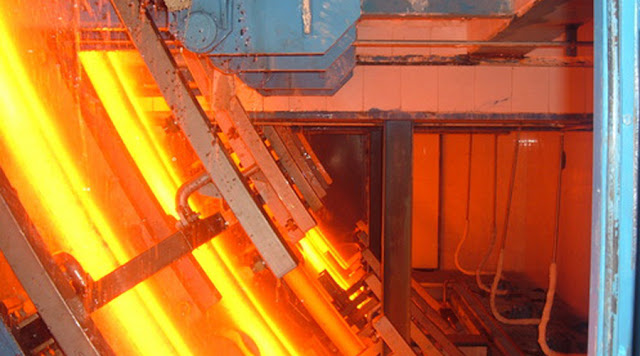Vertical Continuous Casting Process
Vertical Continuous Casting Process: Straightforward Implementation of Vertical Casting Concepts
Features
Vertical continuous casting process characteristics
Continuous casting (strand casting), also known as continuous steel casting, is the process of solidifying molten metal into "semi-finished" billets, blooms or slabs for subsequent rolling in finishing mills.
Prior to the introduction of continuous casting in the 1950s, traditional die casting involved pouring molten steel into fixed molds to form ingots. Die casting needs to intermittently pour a furnace of molten steel into multiple steel ingots, and after solidification and cooling, the cast billets are obtained after demoulding.
Because die casting needs to make a mold every time it is poured, cool it down and then demould, it occupies a large area, and the time is relatively long and the production efficiency is low.
Continuous casting has been developed to improve yield, quality, productivity and cost efficiency.
It allows better quality metal profiles to be produced at lower cost due to the inherently lower cost of continuous standardized production of products and the increased control over the process provided by automation.
This process (vertical continuous casting process) is most commonly used for casting steel (in terms of cast steel tonnage). Aluminum and copper are also continuously cast.
Advantage
HANI Metallurgical Technology vertical continuous casters are capable of producing extremely special steel grades for demanding applications.
Vertical continuous casting machine are capable of casting almost any steel grade. They are used to cast steel grades that cannot be cast by conventional arc casters.
Advantages of the vertical continuous casting process include the elimination of bending and straightening forces, maximum steel cleanliness, and the cast slab or bloom being uniform and symmetrical in shape.
For very special steel grades, vertical continuous casting machines still have advantages;
However, in the case of extremely high quality requirements, die casting and vertical continuous casting processes are still used today and even preferred in certain cases.
Since there are no bending and straightening steps, there is almost no limit to the steel grades that can be cast. In addition, the completely vertical casting direction creates the best floating conditions for non-metallic inclusions, ensuring excellent cleanliness inside the slab.
The advanced technological package that is widely used today in modern arc casters also expands the operating range of the vertical continuous casting process. The latest scheme of large section round billet continuous casting and the corresponding operation results prove the unique advantages of vertical continuous casting.
No matter what kind of continuous casting machine it is, just choose the right one according to your needs.
E-mail: saleswn@hanrm.com / inquiry66@hanmetallurgy.com (Daisy Zhai)
Tel / Whatsapp / Wechat: 0086 17791213533
Xi'an Hani Tech Co., Ltd.



Comments
Post a Comment